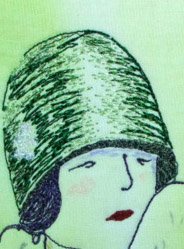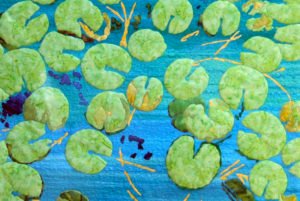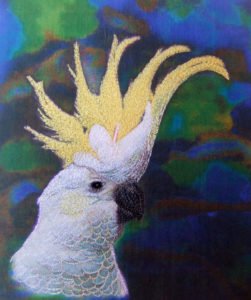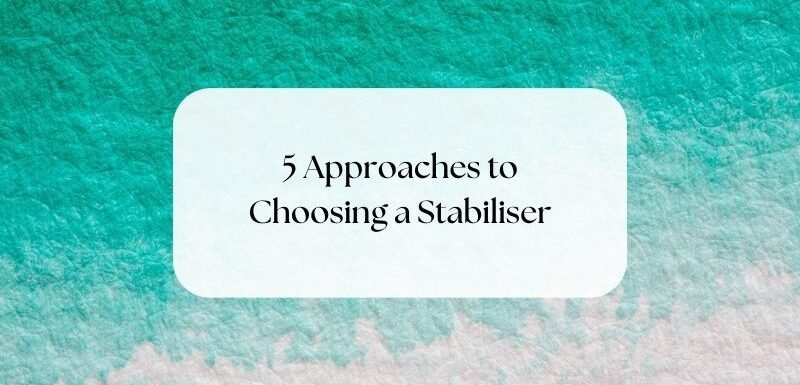Did you know that there are stabilizers to suit every type of project?
Learn to choose the best stabilizer for your project.
Affiliate Disclosure: Some of the links on this site are affiliate links. This means I may receive a small commission (at no further expense to you) if you click through and make a purchase. ThreadSketchingInAction.com is a participant in the Amazon Services LLC Associates Program, an affiliate advertising program designed to provide a means for sites to earn commission fees by advertising and linking to Amazon.com.
1. The minimalist thread sketch

The weight of stabilizer you choose for general thread sketching will be guided by the amount of thread sketching you intend doing. You could choose from:
- Tear-away or cut-away stabilizer
- Leave-in stabilzer
- No stabilizer [or very light tear-away] plus a hoop.
2. The art quilt

This art quilt incorporated an appliquéd top with ‘trapuntoed’ leaves, backing fabric and low-loft batting. For the amount of stitching on this quilt, that was sufficient, without adding any ‘dedicated’ stabilizer.
3. The craft project

Ahh! Craft projects.
The weight of stabilizer used is critical to the success and usability of craft projects.
This little evening bag, comprised of many layers of heavily stitched and embellished sheer fabrics, also incorporates a backing fabric and medium weight stabilizer.
It was important to retain some flexibility to allow for the stitching and turning of seams, however, in this case, the layered and stitched fabric was, in itself, able to offer quite a firm fabric with which to work.
However, if the bag had been shaped differently, and was larger, rigid sides would likely be more appropriate, calling for a very stiff craft-weight stabilizer.
4. The thread painting

Thread painting requires special care when choosing stabilizer, especially if you plan to include low-loft batting as well.
This heavily stitched thread painting of a Sulphur-crested Cockatoo required a firm stabilizer, as the background (which is a beautiful piece of silk – originally white, to which I added the colours) remains totally unstitched.
Therefore, it was vitally important that I knew from the outset that the fabric surrounding the thread painting would remain flat.
Leaving the background unstitched and unembellished allowed the beautiful tones of the painted fabric to be unhindered by anything else.
This strategy was perfect for this scenario, as the thread painting was ultimately framed for hanging on the wall.
5. Lacy and Light Thread Sketching

If your goal is to work lacy, light or filigree thread sketching, especially free-form shapes like those shown above, then you simply cannot go past soluble stabilizer.
Soluble stabilizer has sufficient inherent strength to allow you to stitch, with or without other fabrics, but often with a single layer of sheer fabric, such as organza, creating delicate, fly-away pieces to use as embellishments or individual creations.
It may be necessary to use a hoop for added support as you stitch, although there are many times when I simply hold the fabric taut as I work.
Then, wash out the stabilizer, and voila! you have a fabulously delicate shape in your hands!
Alternatively, lacy items can be worked using heat-away stabilizer.
Stabilization is a BIG topic!
If you’re just starting out, then it won’t take you long to realise that gaining an understanding of how to choose the ‘right’ stabilizer for each project is something that develops over time.
For those who’d like to dive a little deeper into the topic of stabilisation, check out my book: Complete Guide to Stabilising
Stabilization, as a topic, is something I could talk about endlessly, so I hope this short introduction has given you some insight.
A gift for you! The Thread Sketching Basics Stabilizer Guide Infographic
I’ve put together this handy Infographic to give you a ‘Quick Look’ option when deciding on a stabilizer for your next project. (Click on the image to download).


